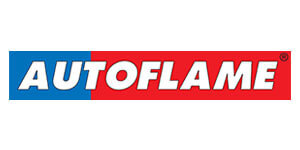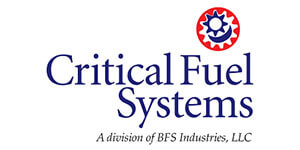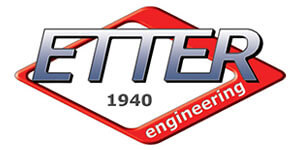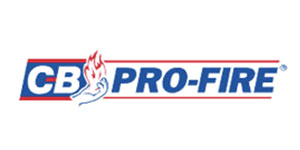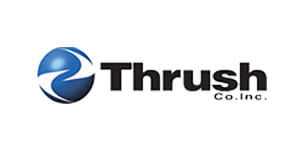Limited resources, climate change and a focus on being a friend to our environment have increased the interest in sustainable solutions like electric and electrode boiler options. Companies are eliminating CO2 output by using renewable fuels on their path to achieving zero emissions. Electrification, powered in whole or in part by renewable sources, is increasingly used to replace carbon-intensive combustion technologies. Cleaver-Brooks electric and electrode boilers are nearly 100 percent efficient, decreasing carbon footprint without sacrificing performance.
Electric Boilers
Electric boilers have many advantages including no requirements for flue gas venting, no fuel storage, limited piping, low emissions, economical install, and they are very quiet.
Though Electric boilers use electricity generated from fossil fuel-fired generators and most commonly using natural gas, are almost 100% efficient once the power is provided and used to heat hot water or generate steam. This in itself can be a significant energy saver to the facility when the electricity arriving at the site is most efficiently delivered. It also contributes very positively to the environmental concerns mentioned earlier.
The commercial/industrial sized Electric boilers come in two types, Immersion Element (also known as Resistance type) and Electrode; together spanning a range of sizes from approximately 10 kW to over 100 MW with the Immersion type ranging from roughly 10 – 3400 kW, and the Electrode type covering the larger capacities starting at about 1 MW and spanning to over 100 MW.
For perspective purposes, a Kilowatt (kW) is equal to 1000 Watts, and a Megawatt (MW) is 1,000,000 Watts. Also, understand that a Watt equals 3.412 Btu/Hr. So one (1) kW equals 3,412 Btu/Hr, and there are 33,472 Btu/Hr in one (1) boiler horsepower. A boiler horsepower also equals 34.5 pounds of steam from and at 212 Deg. F feed water temperature. These boilers can be built as hot water heating boilers or for low or high-pressure steam applications.
Most manufacturers build them to arrive at the site as complete packages ready for appropriate connections, including all the controls, insulation and casing affixed to the skid-mounted pressure vessel.
Cleaver-Brooks’ Sustainable Emission Free Solutions
Cleaver-Brooks is considered one of the premier manufacturers with a full line of Electric boiler solutions, and we at Delval Equipment have been an authorized representative for decades. Representing the Mid-Atlantic Region, we are a total solutions supplier of boiler and burner systems providing equipment, service and parts.
So let’s take a look at the Cleaver-Brooks Electric line of steam and hot water generators – starting with the Immersion type.
Immersion Steam and Hot Water Boilers
These Cleaver-Brooks Immersion Electric boilers are for smaller steam and hot water applications, and all include a cylindrical pressure vessel that can be either vertically or horizontally oriented, containing the Immersion elements. The upper part of the chamber is void of water thereby forming the steam space in the case of steam boilers, and is completely flooded in the case of hot water boilers.
Depending on the design pressure, the boiler will be constructed under either Section IV (low-pressure steam and hot water) or Section I (high-pressure steam) of the ASME Code. These packages will also carry the UL listing for enhancing safety and will be mounted on an integral steel frame and will be covered with a preformed, sectional steel painted jacket. The pressure vessel will also include hand holes and manways for inspection and service.
Controls normally include a Manual Reset High-Pressure Cutoff, Primary Low Water Cutoff with pump control, sight gauge, Auxillary. Low Water Cutoff, MR, feed water stop and check valves, blowdown valves, and safety valve(s).
Electrically, the system load is controlled by either on/off stepping switches or automatic electronic proportioning (modulating) control; staging the respective immersion elements based on pressure fluctuations.
All of the electrical componentry is housed in a control panel(s) including contactors, transformer(s), stepping switches, fuses, terminal strip, and indicating lights.
Cleaver-Brooks Immersion Electric Boiler Models

- Model CR Vertical Steam boiler with a range of 12-563 kW and generating up to 1969#/HR with design pressures of 15, 150,200 & 250 Psig. Voltages up to 600V.
- Model S Vertical Steam boiler with a range of 12-2250 kW and generating up to 7875#HR with design pressures of 15,150,200 & 250 Psig. Voltages up to 600V.
- Model HSB Horizontal Steam boiler with a range of 1560-3375 kW and generating up to 11,813#/HR with design pressures of 15,150,200 & 250 Psig. Voltages up to 600V.
- Model WB Vertical Hot Water boiler with a range of 12-3360 kW and generating up to 11.5 MM Btu/HR with design pressures of 160, 200 & 250 Psig. Note the 200-250# boilers are built to ASME Section I (high pressure) requirements. Voltages up to 600V.
Electrode-Type Boiler
Like the Immersion type, the Electrode Steam boiler package consists of an ASME built pressure vessel mounted on a supporting base.
The unit also contains a central column from which water (the conductor similar to a wire), under pressure, is forced through nozzles toward a neutral and several opposite phase alternating current electrodes which surround the central column. Steam is then generated from the resistive flow of current through this water.
The package also includes an integrated pump and a control sleeve that moves up and down the column based on the load demand and the consequential need for steam; more water flow, more steam, less water flow, less steam. The pressure vessel tank is insulated and lagged with a removable metal casing.
These boilers include a man-way(s) for visual and manual adjustment of stream shape to match the load requirement. They will also include a standby electric heater installed in the tank to maintain pressure during the off cycle, and a proportioning feedwater regulator which operates based on the signal from the level control mounted on the boiler in conjunction with the solid-state modulating pressure control.
The system package will most probably include a Conductivity Control and Sample Cooler Assembly to assure proper water chemistry; avoiding electrode scaling which mitigates or possibly prohibits the heat from transferring to the water.

These conductivity controllers include separately adjustable high and low setpoints. On actuation of the “high” set point, automatic boiler bleed (surface blowdown) begins, and normally a light will indicate that bleed is in process. Low conductivity closes a PLC contact and may be used to signal a chemical feed pump to start.
All of the controls, switches, terminal strips, etc. are housed on or in a convenient pre-wired control panel(s) with indicating lights.
It is also common a Sample Cooler assembly is supplied including connections in the pressure vessel for the boiler water sampling.
The typical Boiler Trim for these packages include: Pressure gauges, water column and gauge glass, blowdown valves, safety valve(s), and a back pressure regulating valve used to throttle or close when the boiler steam pressure drops below the operating pressure. This protects the boiler against a sudden drop in system pressure.
C-B Electrode Specs
It is a very fast response to load Vertical high voltage jet type design
- Design pressures ranging from 100-450 Psig with an
- Input range of 1-102 MW and generating up to 340,000#/HR
- Power applied ranges from 4.16-25 kV
We know that as a Specifying Engineer, Design/Build Contractor or End User, you have several choices to make when evaluating and selecting the best boiler fit for your application. We hope that when you are evaluating you will strongly consider the environmental and product benefits for electric boilers.
Learn more at Cleaver-Brooks.com









